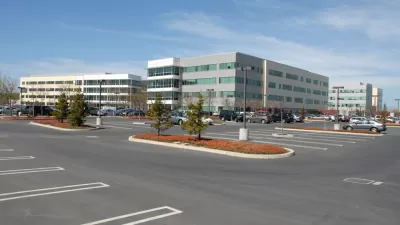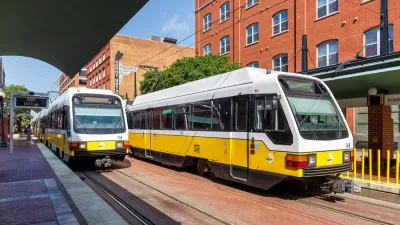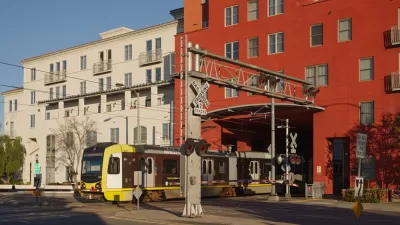According to a report prepared by commercial real estate firm Newmark, Grubb, Knight and Frank (NGKF), the office park model has lost the competitive edge. That is, unless it provides access to transit and urban amenities as well as parking.

A white paper released by NGKF details a shift in the market for office space. The suburban office park, in its current form, is in danger of obsolescence. "More than 1,150 U.S. office properties — or 95 million square feet — may no longer pencil out, the authors estimate, though a number of those can be salvaged with some changes," writes Angie Schmitt in explaining the report's findings.
The market shift lines up with an increasingly urban professional class interested in urban amenities. "'Walkability and activated environments are at the top of many tenants' list of must haves,' the report states. Office parks in isolated pockets without a mix of uses around them must have 'in-building amenities' – including a conference center, a fitness center, and food service — to remain competitive."
However, the pivot away from suburban priorities should not be overstated. Schmitt adds: "Parking was also important to the marketability of buildings in suburban Denver. The report notes that a lot of older management personnel prefer to drive, while younger workers want transit access. So buildings that offered both were in the highest demand."
FULL STORY: Real Estate Giant: Suburban Office Parks Increasingly Obsolete

Maui's Vacation Rental Debate Turns Ugly
Verbal attacks, misinformation campaigns and fistfights plague a high-stakes debate to convert thousands of vacation rentals into long-term housing.

Planetizen Federal Action Tracker
A weekly monitor of how Trump’s orders and actions are impacting planners and planning in America.

San Francisco Suspends Traffic Calming Amidst Record Deaths
Citing “a challenging fiscal landscape,” the city will cease the program on the heels of 42 traffic deaths, including 24 pedestrians.

Defunct Pittsburgh Power Plant to Become Residential Tower
A decommissioned steam heat plant will be redeveloped into almost 100 affordable housing units.

Trump Prompts Restructuring of Transportation Research Board in “Unprecedented Overreach”
The TRB has eliminated more than half of its committees including those focused on climate, equity, and cities.

Amtrak Rolls Out New Orleans to Alabama “Mardi Gras” Train
The new service will operate morning and evening departures between Mobile and New Orleans.
Urban Design for Planners 1: Software Tools
This six-course series explores essential urban design concepts using open source software and equips planners with the tools they need to participate fully in the urban design process.
Planning for Universal Design
Learn the tools for implementing Universal Design in planning regulations.
Heyer Gruel & Associates PA
JM Goldson LLC
Custer County Colorado
City of Camden Redevelopment Agency
City of Astoria
Transportation Research & Education Center (TREC) at Portland State University
Jefferson Parish Government
Camden Redevelopment Agency
City of Claremont





























